Stephen Rand: officially retired, but still breaking new ground
This Q&A with Prof. Steve Rand provides insights into his career, his current groundbreaking research, and what makes Michigan unique
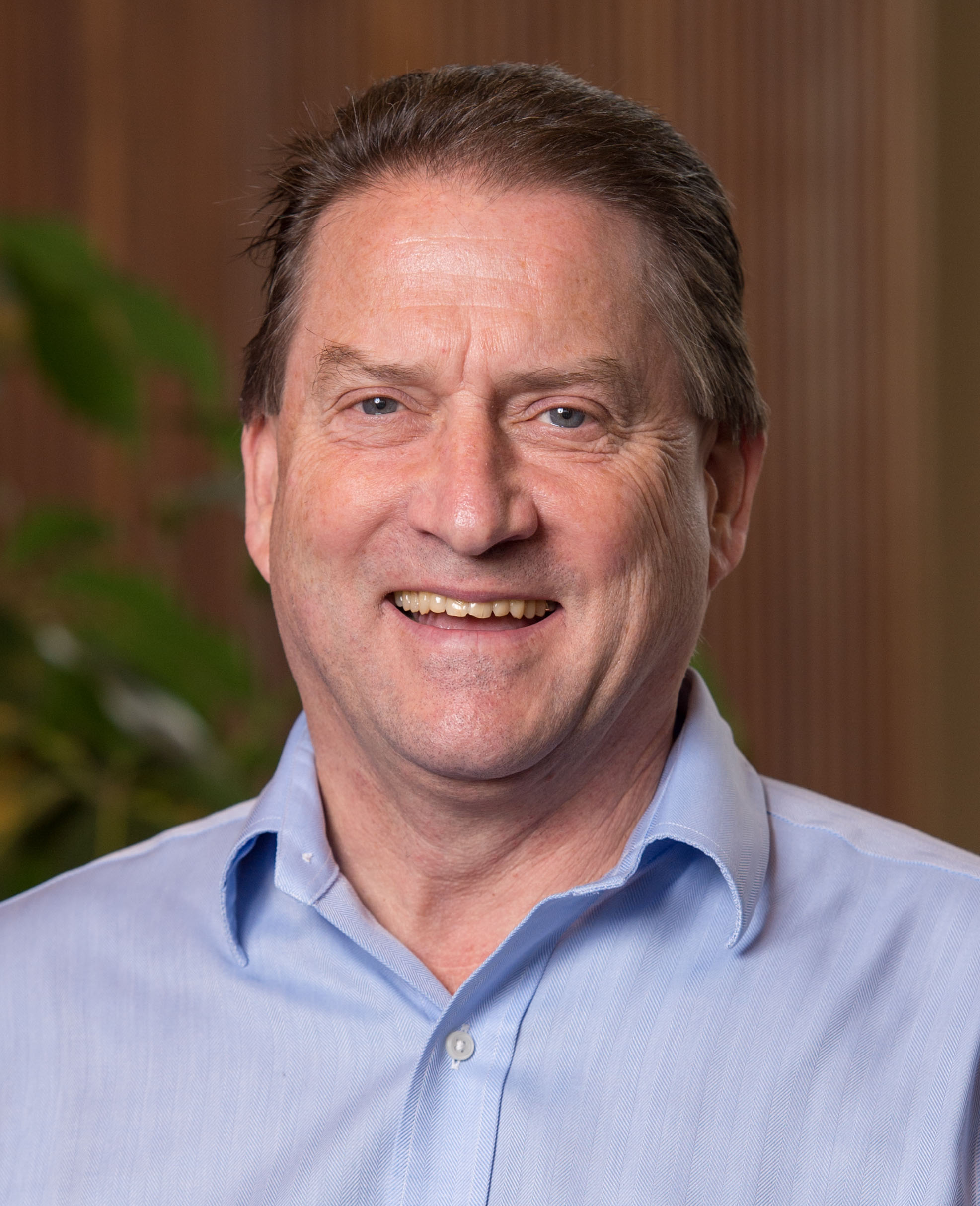
 Enlarge
Enlarge
Prof. Steve Rand recently retired from the University of Michigan after a 33-year career in the area of nonlinear optics, though it may be more appropriate to say he simply stepped down from teaching. Technically retired as of January 1, 2021, his situation sounds more like an unpaid sabbatical.
Rand has two active grants that will go for two more years, and is affiliated with a third that’s new and based in the Department of Nuclear Engineering & Radiological Sciences. And he plans to see his final three doctoral students through to their graduation.
I had the opportunity to chat with Steve to learn more about his career and time at Michigan. Much of his most ground-breaking work is being done right now – making this conversation one that others may refer to in the coming years or decades.
Following the Q&A is a summary of the retirement celebration held in his honor.
How did you come to be a faculty member at Michigan?
One of my first jobs was at Hughes Aircraft Company. They had a fantastic research lab that was well known at the time. It was the era of Bell Labs when industry supported a lot of basic research labs. I was there for about five years, and members of the optics department were doing really forefront optics. I was fortunate in being able to join the group assembled there by Dick Abrams.
That worked out very well because the four-way mixing and phase conjugation being done at Hughes and elsewhere was a very prominent subject in optics at the time, and we were able to publish without too much constraint.
It was always in the back of my mind that if you did things right and continued to publish, then you could maintain the option to go into academia.
Michigan had such a great reputation and it was close to Canada where I grew up. When the possibility popped up of going to Ann Arbor, it was an obvious choice for me.
You came in 1987, during the big move to North Campus, right?
Yes, everyone in engineering was right in the midst of moving. I immediately went to see Emmett Leith [the inventor of practical holography] to try to get a feel for what was going on in the optics area.
It was quite interesting to see somebody as famous as Emmett with all his students lying around on old sofas in his office in the East Engineering Building. No-one seemed to be working in the lab ! It was an amusing introduction to academia, but I found that I could learn an awful lot from Emmett. One of the things I always treasured was learning how to do effective demonstrations that got the students excited.
I was lucky to have worked previously at places where there were lots of resources, and the same was true at Michigan. There were people like Emmett Leith right down the hall to talk to and learn from – I’ve been very fortunate in that way. But also there was every kind of instrument around too.
My early research was not in the ultrafast arena, so I didn’t get to know UM faculty working on pulsed lasers quite as well as Emmett – like Gérard Mourou who eventually won a Nobel Prize and directed the Center for Ultrafast Optics (CUOS). Like Leith’s research, most of the initial experiments in my group were performed with lasers that provided steady rather than pulsed output. More recently, in a quest to investigate some fundamentally new nonlinear optical processes, we have turned to short pulse techniques to reach higher peak powers, pushing the research into the ultrafast regime.
What would you say are your biggest research contributions to the field?
As a postdoc at IBM [Rand was there from 1978-1980] I performed the first magic-angle, line-narrowing experiment in Dick Brewer’s group. We showed that you could decouple nuclear spin interactions between an ion of interest and its neighbors, thereby decreasing (and controlling) its optical transition line width. The decoupling technique was well known in nuclear magnetic resonance, but we extended it to optical frequencies for the first time.
After that I went to Stanford as a research associate and got inspired by two future Nobel Prize winners. Then at Hughes Research Labs [Rand was there from 1982-1987], I invented the H3 diamond laser, which was the first room temperature color center laser. The first operational device was actually crafted from a beautiful 3-carat, American-cut, fancy yellow diamond. A memorable aspect of the experiment was when we had to ruin the gem by having it polished by reluctant gemologists in Santa Monica.
But the more lasting thing we did at HRL was to study the electronic structure of the NV color center in diamond which has since become a prime candidate for quantum information applications. That work led to very interesting developments in totally unexpected areas of quantum information science after I joined the faculty of the University of Michigan.
My early students continued the work on NV centers in diamond and on devices called upconversion lasers. The group proved that the ground state of the NV center was a spin triplet that could serve as a quantum “bit”. Several students also contributed to upconversion laser research for about 10 years and received numerous patents. But the upconversion laser work became obsolete pretty fast after the development of gallium nitride. Eventually, the importance of LEDs and lasers based on nitrides won worldwide recognition. We got knocked out of the water by some excellent Nobel Prize work there.
Some of the most memorable research done in my group was the magneto-electric research that we’ve done recently. We stumbled on a family of unsuspected nonlinearities that are mediated by the magnetic field of light. These phenomena were predicted by Debye over one hundred years ago but have not been observed until now.
The most surprising feature of these effects is that they involve the normally weak Lorentz force of light and require only modest intensities. If you go to the extreme intensities that became possible with the advent of chirped pulse amplification at Michigan, namely 1018 Watts/cm2, magnetic forces of electromagnetic waves become pretty significant. In fact they become equivalent to electric forces. But at intensities that are 10 orders of magnitude lower there has never been any expectation of seeing phenomena driven by the magnetic field of light.
So it was a big surprise to see magneto-electric effects at low intensities of light for the first time. And it’s been a marvelously complex puzzle to figure out how these phenomena become so greatly enhanced. At this stage, we have discovered two mechanisms that permit relativistic effects to take place under non-relativistic conditions and there may be others. That’s the latest work.
Wow. Is it too early to know exactly how all of this will be used one day?
The short answer is, yes – it’s too early.
People have had a great deal of difficulty understanding and accepting our findings because they are contrary to what the entire present generation was taught. However time will tell.
We have explored several phenomena new to nonlinear optics and been challenged to explain how they come about at fairly low intensities. Because it has been argued for a long, long time that dynamic magnetic effects are not induced by light at low intensities, it will take a similarly long time for the community to accept a new reality. I expect we shall literally have to wait one or two generations before people realize how exciting a development this is.
We are currently pursuing one or two things that will help convince people of the importance of this work. One is the development of an all-optical, high-speed switch that permits one to control the transmission of a light beam through a material with another beam, while encountering it at right angles.
Normally in nonlinear optics, for two beams to interact effectively, they must be going in the same direction. They have to overlap a lot. Now, through the use of magneto-electric nonlinearities we have found a way to do ultrafast switching at right angles, which opens up geometries for new photonic devices that were previously impossible. Greg Smail (a current PHD student in applied physics, advised by Rand) played a key role in the first observation of magneto-electric charge separation (or rectification) and is currently doing a great job on implementing the switch idea. He is also carrying out important theoretical simulations to give us more perspective on what to expect in future experiments.
One thing about magneto-electric nonlinearities that caught people’s attention and resulted in a MURI award to establish the Center for Dynamic Magneto-Optics (DYNAMO) at Michigan was that we proposed some new mission capabilities based on the idea of beaming energy and converting it to electricity very efficiently in dielectrics – as opposed to producing power from semiconducting or photovoltaic materials.
When people think about magnetic effects or about power generation and current carrying capabilities, they invariably think of metals or semiconductors.
But last year, we demonstrated that charge separation can occur in illuminated optical insulators which don’t conduct electricity. Magneto-electric interactions might be very interesting for energy conversion. With sufficiently high optical intensity, and by the way the light can be coherent or incoherent (like sunlight), we have now shown you get charge separation capable of doing work on an external circuit. In this way, an optically-charged capacitor could convert light energy to stored electrical power in a fashion which is theoretically much more efficient than solar cell operation.
Was it a successful MURI?
Yes. We identified a number of risky goals based on fundamentally new science at proposal time and accomplished just about everything we had proposed once the award was made. MURI awards are intended to encourage new ideas and breakthrough research.

 Enlarge
Enlarge
There was a period of frustration though at the beginning, especially for our collaborators tasked with synthesizing M-E materials, because we first had to figure out exactly how M-E phenomena worked. But eventually we had success not only with the optical experiments but also with materials development – even better than anticipated. The groups under Tobin Marks at Northwestern and Jinsang Kim at UM got busy synthesizing samples for the project, performing theoretical work and interpreting it using chemical models to predict what sort of structures would enhance magneto-electric effects. And that work expanded into parts of nonlinear optics that had not been explored before.
For example their work predicted that the third order nonlinear response of materials, or the optically-induced change of refractive index that people have measured in the past, actually contains equal parts electric and magnetic induction. That was a big surprise.
The biggest surprise of all though was simply observing new nonlinear effects fifty years after the birth of nonlinear optics (NLO) at U-M. In prior research, most experiments were performed with collinear beams, a geometry in which it is impossible to distinguish electric from magnetic effects. Since leading textbooks claimed that magnetic effects could not be induced at optical frequencies anyway, nobody searched for magneto-electric effects in crossed-beam geometries.
All we did was to change the geometry, and all of a sudden these new effects showed up. We’ll be leaving much of the future work to the next generation, but we’ve already got a bunch of really good students excited about this new direction for nonlinear optics.
Let’s move on to teaching. So you have taught a total of 14 different courses, evenly split between grad and undergrad.
Yes, over the course of my career I was the go-to guy whenever the department needed to juggle assignments or have someone teach a new course in our area.

 Enlarge
Enlarge
But the bottom line is that teaching new courses forced me to get better and better on the theoretical front. Ultimately I think it’s fair to say that I couldn’t have written the textbook I did without that push to teach a large number of courses.
Moreover we would never have explained magneto-electric phenomena without the deep understanding that I developed over the years in electromagnetism and Maxwell’s equations through teaching. Lectures formed a crucible that developed valuable perspectives in me and allowed my group to forge into the unknown.
Can you tell us about some of your graduate students?
Quite a few of my students went into academia after graduating. Amos Kuditcher, for example, returned to Africa and became the head of the Department of Physics at the University of Ghana. Markus Hehlen, Tuan Trinh, Samuel Oliveira, Xiulin Ruan and Burcin Bayram are now faculty members pursuing optical science at various institutions – the University of New Mexico, University of South Florida, Universidade de Grande Dourados, Purdue, and Miami University respectively. Mark Savellano went into medical research at Dartmouth.
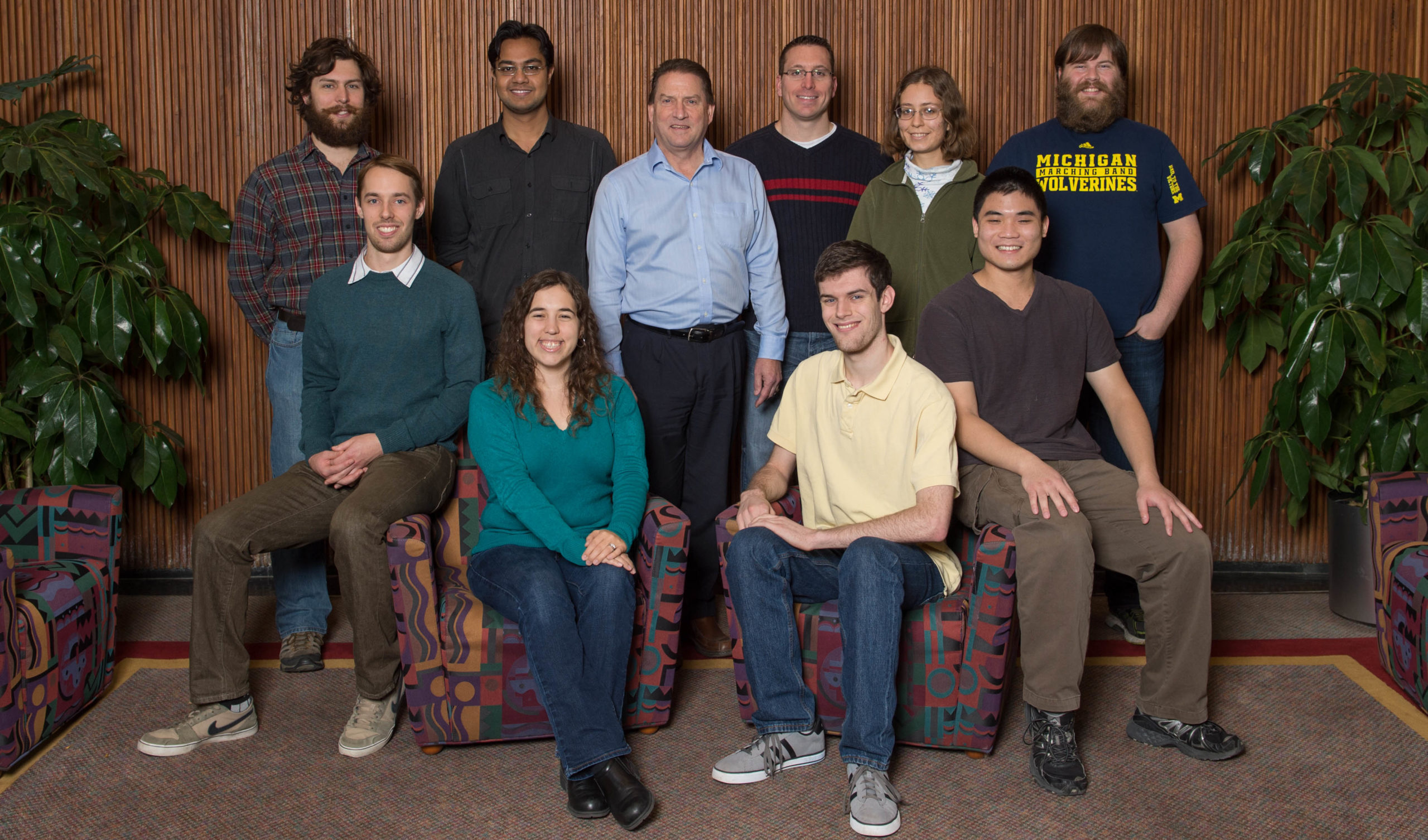
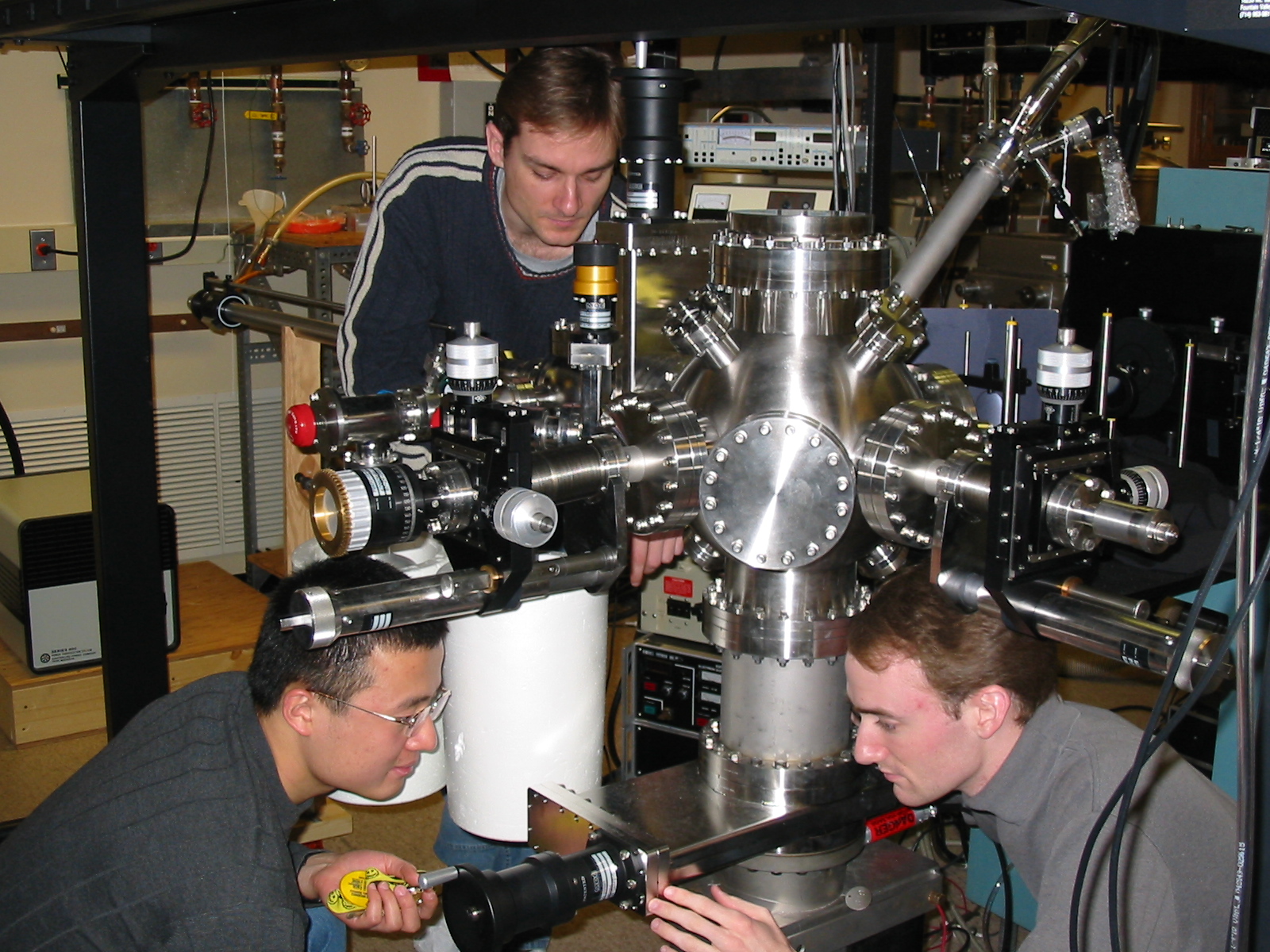

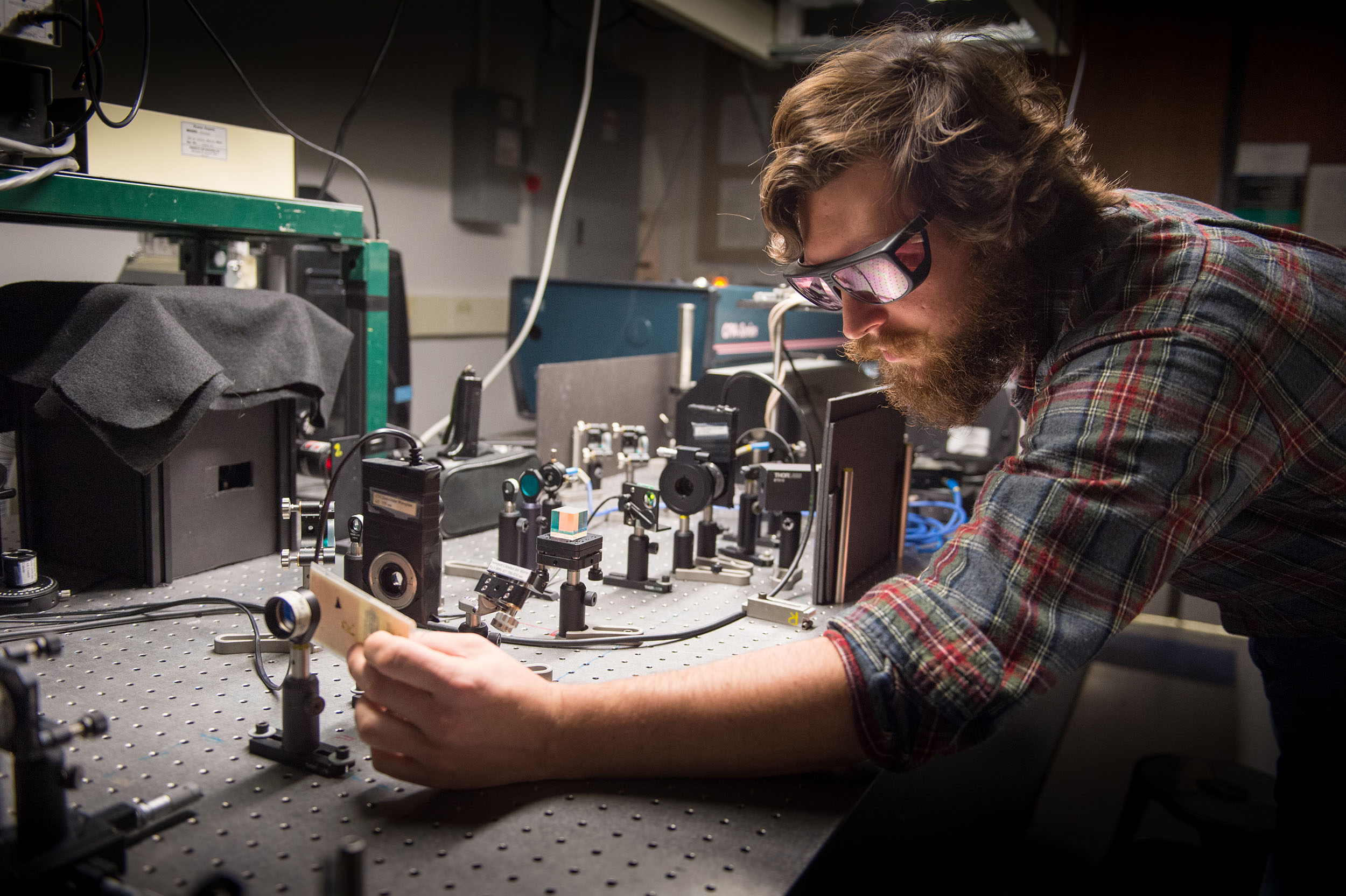

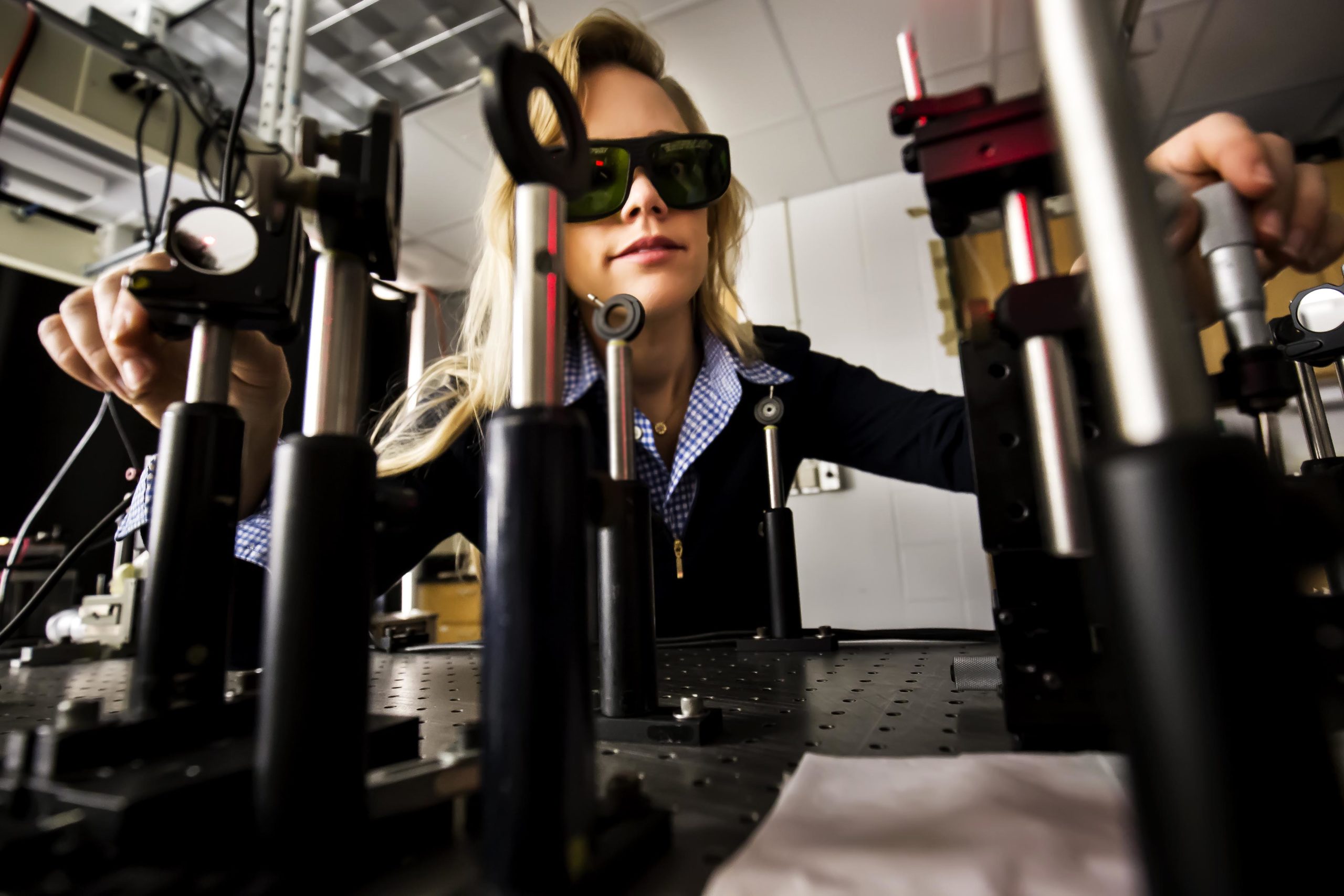
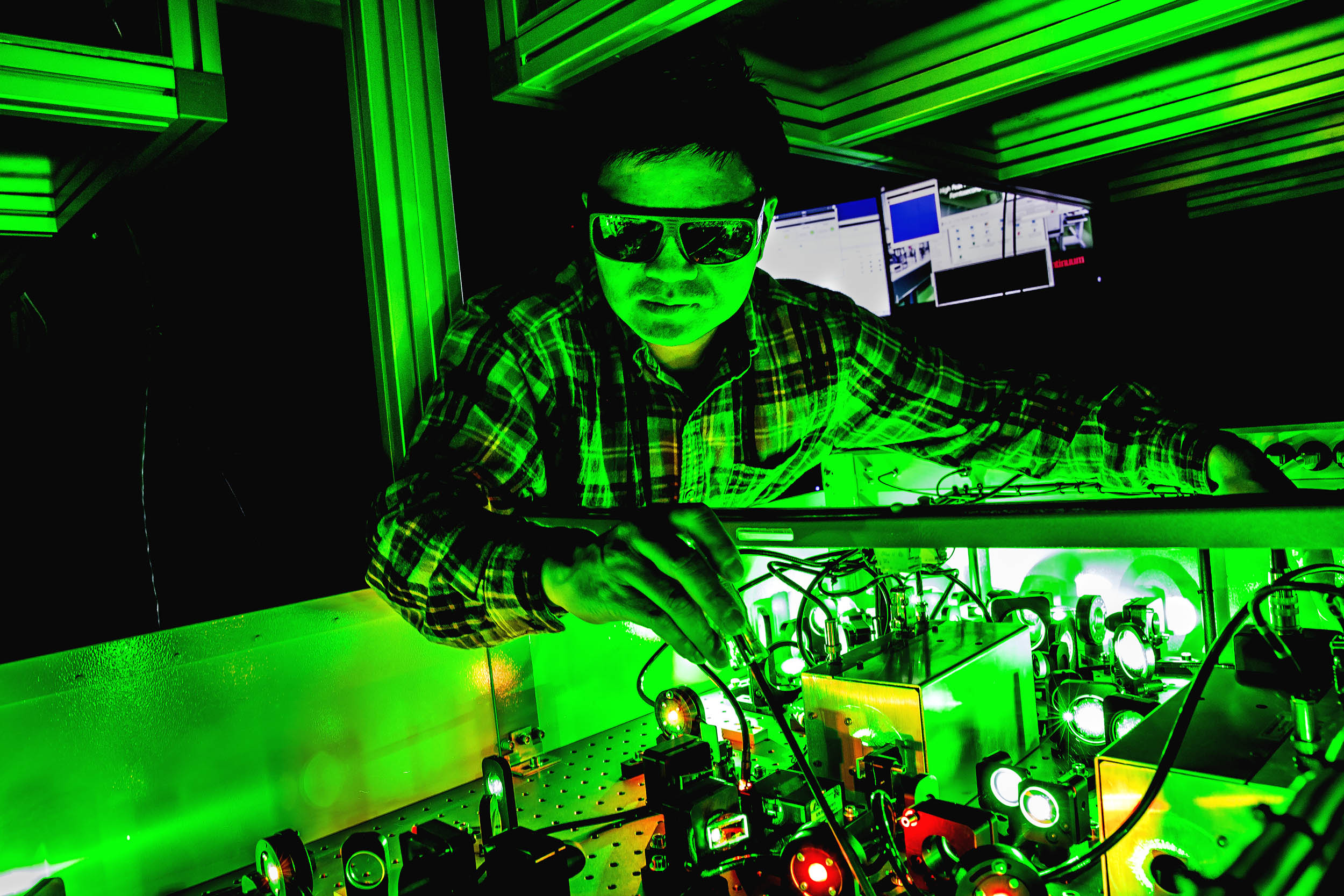
Others have gone into industry. This includes Alex Fisher who wrote a thesis on magneto electric effects and now works for Intel. My first student David Redman still lives in Michigan and manages large research collaborations around the world. Sean Redmond, William Fisher and Guy Williams all worked for Northrop Grumman after graduation. Redmond is now at MIT Lincoln Lab. Steve Brown works at NIST in Gaithersburg. Liz Dreyer is a business consultant. Alan Lenef works for Osram-Sylvania. Qize Shu worked for a while at LIGO, the gravitational wave observatory. Ping Xie is a prominent investor. The list is long, so I may have left out someone. I will add though that my current students Laura Andre, Greg Smail, and Long Cheng are all strong candidates for academic positions.
What are some of your favorite aspects of being at Michigan?
I think the greatest thing about Michigan is that it has attracted so many good people. You can hardly keep up with the expertise in your own department and as soon as you start to explore other departments, you find out there’s tremendous depth everywhere.
I learned a great deal from both the materials science people and the mechanical engineers at the University of Michigan. For example, the mechanical engineers were very familiar with something related to the magneto-electric project that I had never heard of – namely parametric resonance. The ME department included some of the original theorists who solved problems such as why boats under tow become unstable and capsize. That problem was an important one for the Navy to solve and I found out that the solution was closely related to the driving mechanism for magneto-electric nonlinearities in optics.
That’s the kind of resource that I’m referring to at Michigan. It’s a place that has tremendous faculty and staff, and infrastructure with vast possibilities.
Do you have any advice for young faculty?
I think new faculty should not limit themselves to meeting the metrics of the institution, but should be prepared to take risks. The payoff is greatest if you have the courage to examine and explain just one thing that is not known.
This latest work of ours on magneto-electric phenomena is a prime example of that. We saw something unexplainable in the lab and have doggedly been studying it for over 10 years now.
Along the way we experienced a great deal of discouragement and criticism over this topic because nobody thought our findings were possible. But seeing is believing and time will tell.
We couldn’t get the attention of theoreticians to help us out. No-one would touch it with a 10 foot pole, although a few individuals helped by questioning our analyses. You shouldn’t be in research unless you’re willing to take a risk, have the confidence to follow it up, and can also develop a thick skin!
In my case I was fortunate to get major support after ten years of modest progress in trying to understand the origin of magneto-electric nonlinearities. This late career support permitted us to sustain that quest, which was ultimately extremely successful. We met all our goals. Still, I think we should strive to provide that kind of unfettered support to talented younger scientists.
What do you want students to know about the field of optics?
I’ll tell you what I tell students in undergraduate advisory meetings. Optics is a very surprising field. It is often called an enabling technology that relies on using light in creative ways to address needs in an incredible array of contexts. Take a few simple concepts, stretch them to the limit, and solve problems with approaches that are well-suited to miniaturization and commercialization. It’s a fun process.
In general you need to have an application in mind so that optical engineering can guide the implementation of basic physics concepts. To find the most satisfaction in an optics career I think you need to like the idea of straddling engineering and the basic sciences and be prepared to meet the dual challenge.
Why do it? Because light is amazingly cool.
What do you plan to do in your retirement?
I think the real answer is, I’m not truly retiring. In fact I just hired myself back to a part-time status at the university to finish up a couple of ongoing research awards that will last two more years.
However there are lots of things that have been side-lined in my private life. My wife and I are interested in travelling as long as we can. We plan to visit France soon to enjoy the cafes in Paris, and we’ll probably be going to Holland because one of my sons settled there recently. Our other son lives in Canada. Then there are ongoing interests like music-making, artisan cheese-making and construction of a wind turbine. With all this to do, I don’t expect to be sitting around much.
—————————————————
The Retirement Party
Retirement celebrations in Electrical and Computer Engineering are typically elaborate affairs where faculty, students, and staff gather to congratulate faculty on their career, followed by a reception of yummy treats and casual conversation.
The pandemic meant we had to settle for a zoom meeting on February 3 – which nevertheless was filled with good memories and laughter.
ECE Chair Mingyan Liu welcomed everyone, and recalled Steve telling her about his laser cooling research. “I was totally impressed” said Liu.
All of Rand’s degrees were in Physics, and received in Canada; his PhD was from the University of Toronto. He was actually the first hire in Applied Physics at the University of Michigan. He is a fellow of the American Physical Society, the Institute of Physics, and the Optical Society of America.
Rand graduated 19 doctoral students, and has three more in the pipeline.
Alex Fisher (PHD Applied Physics 2016), a former student advised by Rand, joined Rand’s MURI in 2012 as a PHD candidate. He is now a process engineer at Intel, and co-author of 15 articles with Rand and other members of the group.
“It was an exciting time to work in Steve’s group,” said Fisher, “as it quickly expanded to include several PhD students, undergraduates, and post-docs all working simultaneously to investigate an exciting new class of magneto-optic effects. Steve cultivated a research environment which required close collaboration with students and faculty from a broad range of disciplines, not just at U Michigan, but at several top research institutions across the country. In reflecting on my time as one of Steve’s students, I appreciate his guidance and the time he devoted to both his students and his research. I wish him all the best in his future endeavors!”
Longtime colleague Herb Winful arrived at Michigan the same year as Rand. Herb recalled how Steve would play hockey on the frozen Huron River, and play the grand piano in Pierpont Commons – always his own compositions. He also remembered the tasty vegetables Steve grew in his yard, and appreciated the optics demos Steve would do in his classes.
Former department chair Khalil Najafi thanked Steve for his willingness to take on a great variety and long list of service assignments. “We could always depend on you. That’s why you served on so many different roles. Thank you for always being so positive, and so open to helping the department.”
Pallab Bhattacharya told Steve, “what attracted us to you, apart from academics and everything else, was your warmth, and for me particularly, your sense of humor.”
Steve spoke personally to most everyone who attended, and offered kind remarks to an often overlooked group, the staff and others. “Thanks to the folks in the background,” said Steve. “The secret to our happy environment is the well trained staff. The staff list reads like a ‘who’s who of people for you.’”
Amy Brooks, research process coordinator, said she often uses the upbeat quote she heard from Steve, “Don’t expect miracles, rely on them.”
As a parting comment Steve offered: “Live long and prosper.”

 MENU
MENU 
